To the average interested trout angler, the last half century of taxonomic gymnastics in identifying distinct subspecies of cutthroat trout in what’s left of their native ranges has been mind-boggling. When I was a kid, the mere presence of “natives” swimming in some of the tiniest mountain creeks on the slopes of the Colorado Rockies was a closely held secret. By the mid-1970s, non-native brook trout, brown trout, and rainbow trout had ravaged the small waters of the Centennial State, so when rumors of the odd cutthroat trout turning up in some no-name creek near some old mining town along the spine of the Continental Divide, the state’s old-timers leaned in to listen.
Even then, the notion of catching native cutthroats as opposed to bland, cookie-cutter rainbows or gorgeous but sadly stunted brook trout was pretty special. And today, biologists are still identifying “new” strains of cutthroat trout once thought to be lost thanks to well-intended, but disastrous, fisheries management practices of the 20th century — namely, the introduction of non-native trout and char to the waters of the West.
Thanks to small miracles, some of these fish once thought to be extinct were sequestered from the impacts of non-native fish introduction and they persisted, often in plain sight, only to be “rediscovered” by passionate fisheries biologists. The state fish of Colorado — the greenback cutthroat trout — is the ideal example. Once thought lost to time, a small population turned up in a little creek on the shoulders of Pike’s Peak in the 1970s. These special fish were transplanted there decades ago from their native streams along the Front Range, and that act of sheer serendipity likely saved the species from winking out altogether.
In recent years, other cutthroats feared lost to extinction have been positively identified, like the San Juan cutthroat trout, the Uncompahgre cutthroat trout, and the Hayden Creek cutthroat trout — all are now being carefully nurtured in state hatcheries with plans for reintroduction into their native watersheds. The search goes on for the mighty Yellowfin cutthroat trout, a massive lake-dwelling native documented in Twin Lakes southwest of Leadville in the late 1800s, but feared lost to the western version of Mr. Peabody’s coal train.
What’s true for trout is true for black bass, too
As much as it might pain the long-rod crowd that passionately pursues America’s native trout and char from the spine of Appalachia to the crest of the Sierra, the country’s most-popular angling target isn’t a trout at all. The omnipresent black bass occupies that mighty pedestal, and it’s a throne it likely won’t cede anytime soon. The heralded “Florida-strain” largemouth bass is a trophy-hunter’s top quarry, and this hard-fighting and ill-tempered offshoot of the black-bass family tree has been propagated all over the North America, from the steppe-country lakes of central Mexico, north to the shoulders of the Sierra in California, and all across the United States. It could easily claim the title of “America’s Fish,” and if bass anglers had their way, that would indeed be the case.
But that Florida largemouth is but one of likely dozens of black bass species that swim the murky, tannic waters of the South, from the Hill Country of Texas to the Ozarks of Arkansas, and from the swamps of Atchafalaya Basin to the Atlantic drainages of the Carolinas and Georgia. And, unlike their largemouth cousins, most black bass species aren’t measured in pounds, but rather in mere inches — a big spotted bass native to the Big Thicket woods of East Texas might be just 15 inches long. The same is true for the heralded Guadalupe bass of the Texas Hill Country and the celebrated — and increasingly rare — Suwannee bass of the blackwater rivers of north-central Florida.
Late this summer, ecologists with the University of Georgia have officially declared the presence of two “new” black bass subspecies — the Bartram's bass and the Altamaha bass. Both species were previously identified, but only recently, thanks to the use of mitochondrial DNA analysis, were they confirmed as distinct species of the black-bass lineage based in the genus micropterus (and, yes, smallmouth bass are in this genus, too).
The road to legitimacy for the Bertram’s bass started in the 1980s, when ecologist Bud Freeman examined some bass caught by anglers on the Broad River, which flows into the Savannah River north of Augusta. Freeman knew something was different about the bass he examined, but he couldn’t talk the anglers out of relinquishing the fish — he even offered them $5 for the unique bass.
“That would have been an important specimen,” said Freeman, the lead author of the recently completed study.
In the years since, Freeman and his team have collected specimens of black bass from the Savannah River and Saluda River drainages in southeast Georgia — these fish would become what’s now known as Bartram's Bass. They also collected fish from the Altahama and Ogeechee rivers farther to the south. These black bass are now known as the Altahama bass.

To the casual angler who might catch one or both of these fish, there’s probably not much chance that they’d know what took the fly or the lure. While all black bass species are modestly different, their general appearance is very similar.
For instance, the Bartram's bass — Micropterus pucpuggy — sports a bronze hue and leopard-like markings, as well as an oval tooth patch in its mouth and red eyes outlined by a thin, gold band. The Altahama bass — Micropterus calliurus — looks very similar, but its markings are a bit more muted, and its fins are tipped with an orange hue.
But, take either “new” bass species and stack them next to a Suwannee bass, an Alabama bass, or even a shoal bass, and the less initiated would be hard-pressed to positively identify each individual species. And, like most black bass species, neither grow to the length or girth often associated with trophy largemouths — both designated species top out around 14 or 15 inches in length.
Exacting standards for identification
Using mitochondrial DNA to positively identify Bartram’s and Altahama bass in the study was key to only including genetically pure fish. Today’s biological technology is light years ahead of the methods previously used in fish identification studies.
“It used to be that you’d have to go out and catch the fish, bring it in, count the scales, measure the tail, measure this and that, write a description, and you’re done,” said Mary Freeman, co-author of the study and adjunct faculty at UGA’s Odum School of Ecology. “Now there is also genetic characterization. In this case, there’s genetic characterization of every single individual used to describe that fish to prevent including hybrid specimens.”
And, just like with trout, hybridization is a real concern for native bass, not just the newly described species in Georgia. As Mary Freeman pointed out, the referenced species used in the study to positively identify Bartram’s and Altahama bass include largemouth bass, smallmouth bass, northern spotted bass, shoal bass, Tallapoosa bass, redeye bass and Alabama bass. The challenge of preventing hybridization in native bass is acute — with vast systems flowing through largely developed habitat, including dams and their backed-up reservoirs, erecting barriers and segregating native fish from non-native fish is simply not possible. In the case with the Bartram’s and Altahama bass species, the new study simply lays an important baseline.
“Hybridization may result in Bartram’s bass not existing as it has existed,” Mary Freeman said, “but we’ll know what it was” if hybridization eventually occurs and the fish ceases to exist in its pure form.
Preferred habitat
Like most riverine species of black bass, both Bartram’s and Altahama bass live and feed in deep pools and the runs that tail out of them. Anglers have likely been chasing these fish for centuries, simply unaware of what they were catching, and the methods are fairly straightforward. Baitcasters in the South often go with the ubiquitous nightcrawler or minnow rigs, while others might crawl soft plastics along the bottoms. Both fish appear to thrive along rocky banks and shoals, so crawfish and insect larvae are obvious choices for bait, lure or fly patterns.
But, in time, these newly designated species will face the challenges associated with human activity that most Southern black bass face, regardless of the methods anglers use to chase them.
“These evolutionarily distinct lineages are important to name,” said Bud Freeman. “In recognizing these species, we recognize how quickly they are becoming lost as extrinsic barriers are breached by human activities.”








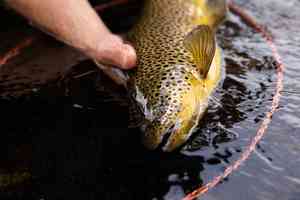

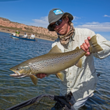
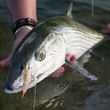



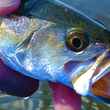






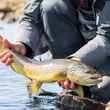
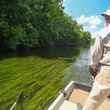
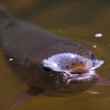
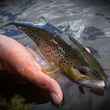





Comments